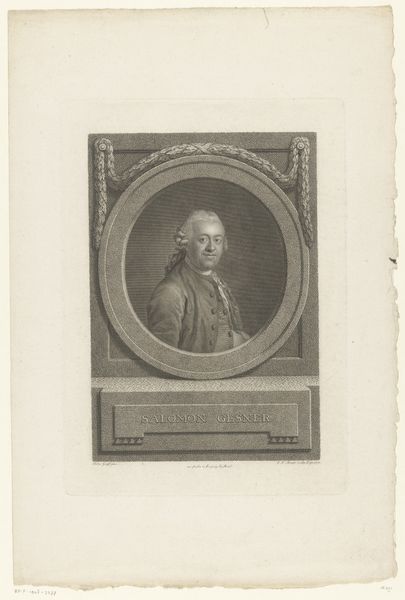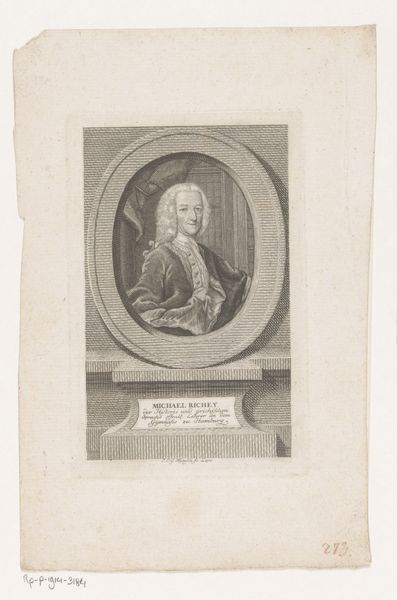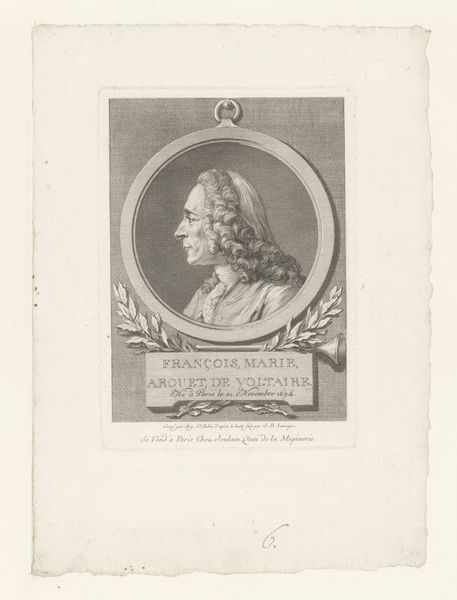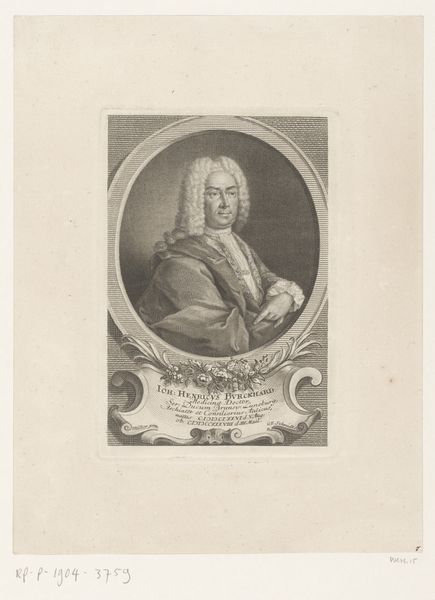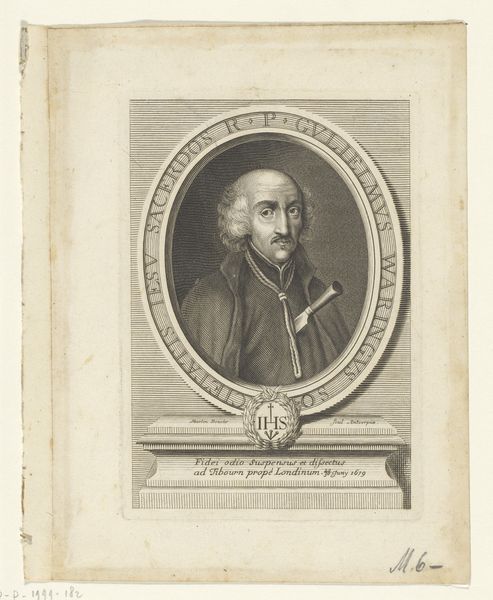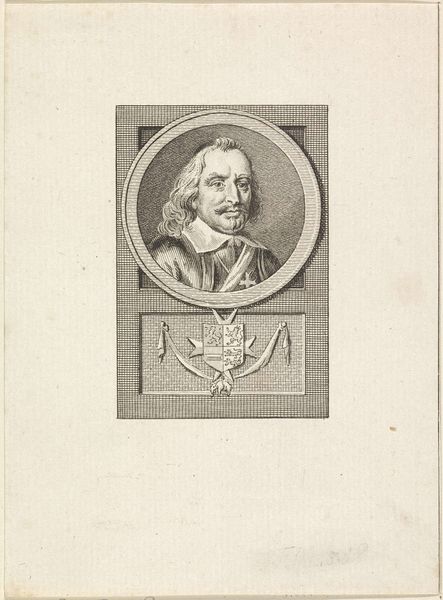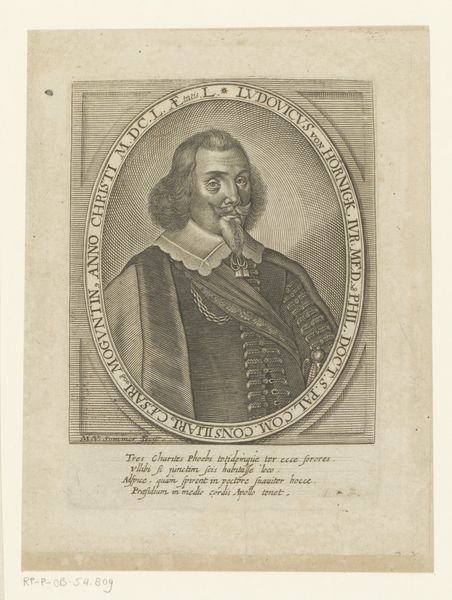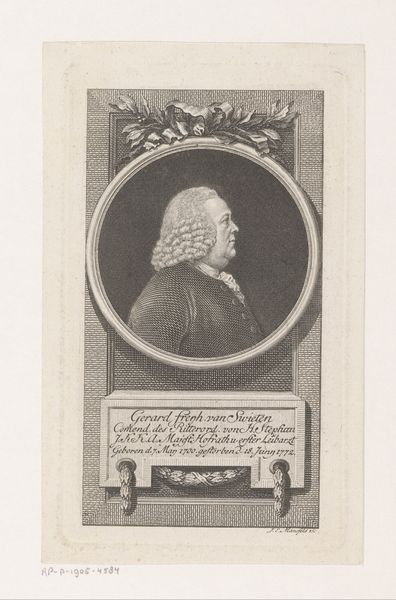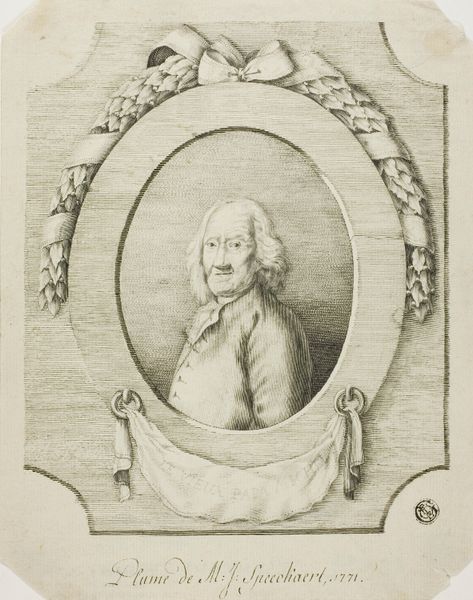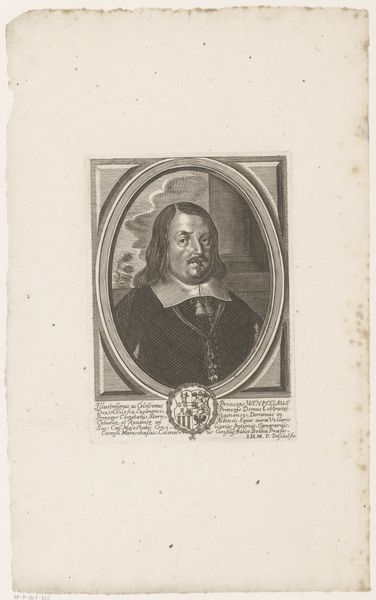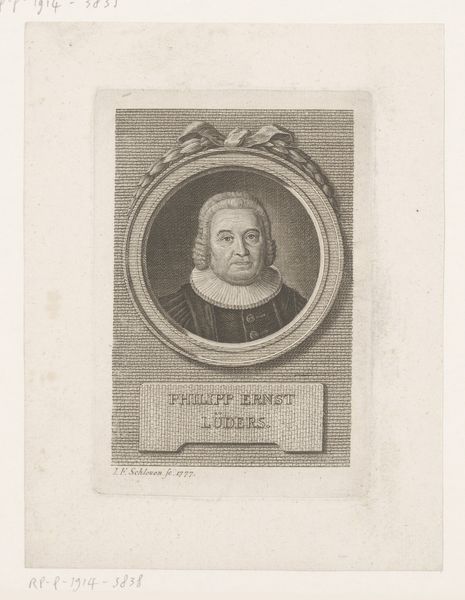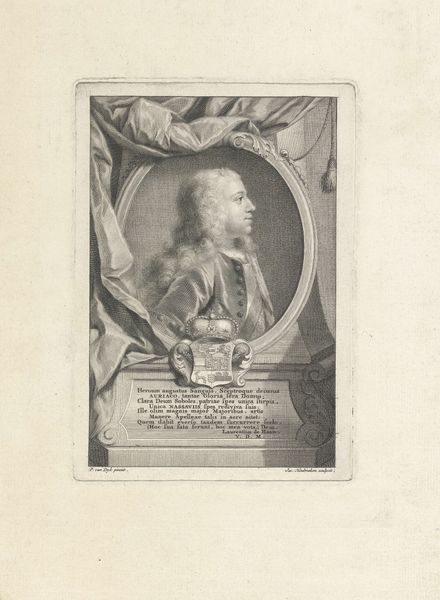
Dimensions: height 85 mm, width 77 mm
Copyright: Rijks Museum: Open Domain
Curator: Before us, we see Johann Andreas Benjamin Nothnagel's rendering of Heinrich Christian von Senckenberg, likely crafted between 1739 and 1804. It is executed as a print, displaying a level of detail that’s quite impressive. Editor: My first impression is of aged elegance—the intricacy suggests painstaking labour, yet there’s an undeniable dryness in mood, like peering at a fading document. Curator: Precisely. The engraving medium lends itself to such exacting linework. Notice the deliberate compositional choices: the subject presented in profile, encased within an oval frame festooned with ribbons, a classic Baroque nod. Semiotically, it’s signaling prestige. Editor: Agreed, the frame is important. You can almost feel the hand of the artisan meticulously carving away the metal, each line demanding attention. These are the techniques requiring years of practice, the mastery defining quality craftsmanship, which inevitably dictated the cost of portraiture. Curator: Absolutely. Also consider the symbolic density. Profile poses, in general, often depersonalize, removing any invitation for intimacy. His gaze directed outwards. This formal approach distances us, elevating von Senckenberg. The texture achieved must come at the expense of time in process. Editor: Which tells a silent tale of labour too. The paper itself holds clues - where was it sourced? Who sized it? These 'lesser' aspects contextualize status. Even in replication, the social structure whispers. Curator: True; to unpack it further, we might investigate how Nothnagel leveraged intaglio to manipulate light. Consider how light is rendered across his garments and his hair—a contrast essential for modeling form and implying depth. This elevates a single print from pure historical artifact. Editor: Exactly. These are physical objects shaped by time. Thinking about materiality forces awareness—each component of the work has journey. And looking closer at such an object makes me imagine these individual hands in different places creating one piece over years. Curator: I concur; we mustn't elide material, process, or history here to render just its formal construction, just as much we need to understand symbolic intent behind its Baroque language. Editor: Then hopefully viewers will not ignore these qualities too, by perceiving all as something so wonderfully built.
Comments
No comments
Be the first to comment and join the conversation on the ultimate creative platform.
